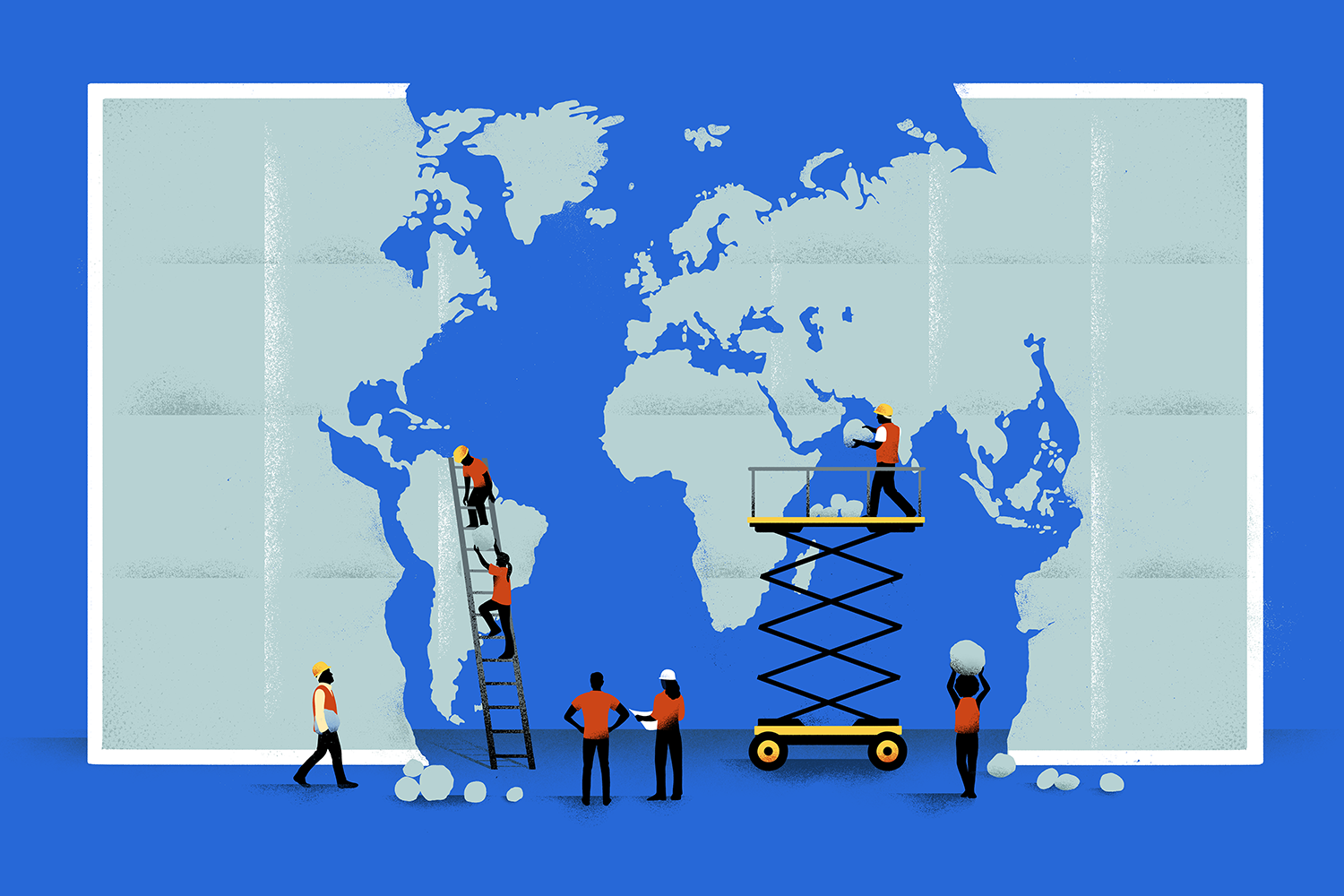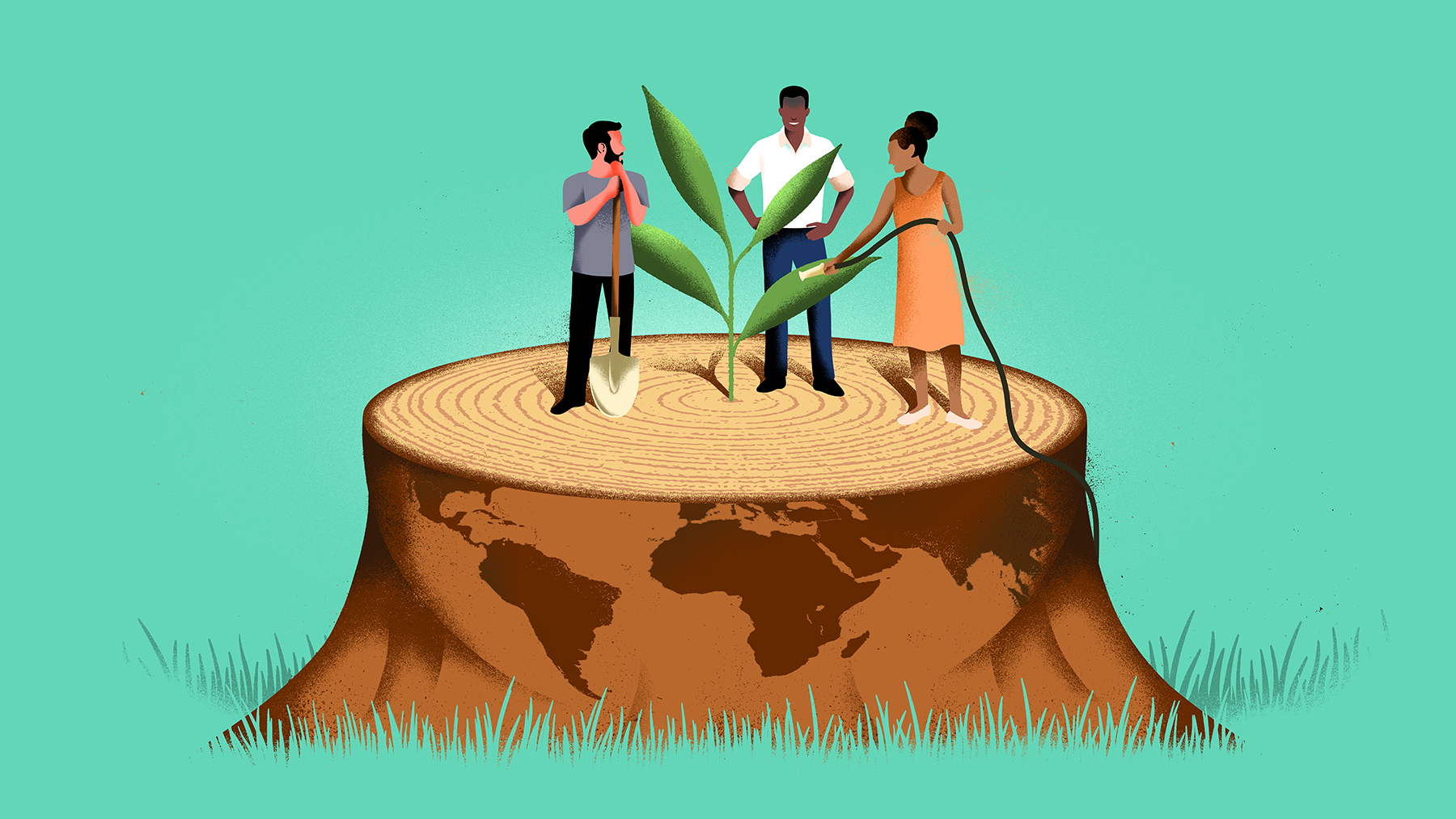
Sébastien Thibault for FP Analytics
Development cooperation is in need of reform as many countries aren’t meeting their donor obligations, the framework for planning and tracking funds is fragmented, and aid recipient countries’ voices often go unheard in planning their futures. In an interview with FP Analytics, Vitalice Meja, the executive director of Reality of Aid Africa, talked about the kinds of reform needed to accelerate progress on sustainable development and improve global governance following the 4th International Conference on Financing for Development in Sevilla, Spain. The following transcript has been edited for length and clarity.
FP Analytics (FPA): At this critical time in the development field, what does Reality of Aid Africa focus its efforts on?
Vitalice Meja (VM): We are a pan-African network that focuses on addressing poverty alleviation through development cooperation policies. We look into how development cooperation contributes to poverty eradication in Africa, and how policies can be changed or shaped to address the concerns of African countries. We monitor aid performance and whether there has been follow-through on donor commitments. And we look at emerging issues around the world and how those issues affect the flow, quality, and quantity of official development assistance (ODA).
FPA: Can you explain what is meant by the quality and quantity of aid and how issues with aid quality and quantity are impacting development in Africa?
VM: Quality of aid refers to compliance—the fulfillment of commitments that were made by rich and developing countries in Paris, and later Busan, on improving aid and development effectiveness—and that is mainly assessed by the four principles of development effectiveness: democratic ownership, inclusive partnership, mutual accountability, and outcome-based results. Countries have agreed on specific targets they need to meet, and these are measured or monitored after a period of time by the member countries of the Organisation for Economic Co-operation and Development (OECD)’s Development Assistance Committee (DAC) as well as external organizations such as my own, Reality of Aid Africa, and the Global Partnership for Effective Development Co-operation, which is a civil society coalition that tracks impacts at the country level.
Quantity largely refers to the commitment of the U.N. target of 0.7 percent of gross national income being spent on aid and the actual deliverables that are happening. At Reality of Aid Africa Network, we look into annual aid flows into the continent and try to measure the 0.7 percent commitment against the actual flows. We are also currently looking into the issues of governance, particularly understanding that the current framework is skewed and does not really address the development needs of African countries.
One challenge relating to the quality and quantity of aid has to do with the issue of the norms, the way the norms are formulated. The definition and objectives of ODA are set not to align with the development goals of developing countries but to make sure the donors themselves look good. Within the context of the global financial architecture, a lot of resources flow that really don’t have an impact but do contribute to resources flowing out of Africa, and ODA is enabling that. We are trying to reimagine development cooperation—particularly around issues of decolonization and ODA debt—in pursuit of a framework for conducting development cooperation where everybody can be held accountable. But for that to happen, major reforms are needed in terms of entrenching or increasing the voices of countries of the Global South and clarifying ODA’s targets and objectives.
FPA: What are the most pressing challenges to effectively implementing development strategies, and what are some solutions you are seeing within Africa?
VM: A major challenge is the issue of fragmentation. Addressing this is critical to reducing transaction costs and also putting recipient countries in the driver’s seat with regard to their development planning and implementation. One of the major obstacles to this has been the refusal of some donors to use the recipient country’s financial and planning systems. Ideally, a donor country would use the recipient country’s auditing system and resource framework to do their own planning and tracking. But most donors don’t do that. This refusal has contributed a lot to increasing transaction costs but also a waste of resources for developing countries.
In terms of solutions, an important one is changing the legal framework of donor countries. For example, the U.S. legal system does not allow the country to directly fund a national budget. It’s the same for Germany. Even though countries have signed agreements, their legal frameworks do not permit for operations to take place in a manner that is consistent with the targets set or the agreements made. So, one of the things we’ve been pushing for is to develop a framework that requires the use of the recipient country’s budgeting system, because it’s also about accountability to the citizens of those countries where the aid comes from. Using [third-party] project implementation units does not really secure national accountability on those projects, whether they succeed or fail. So, in essence, donor countries cannot explain what happened if things go wrong or defend the projects if the communities are against them.
Also, there’s the issue of localization, or going directly to civil society—this cannot happen in a vacuum. You need to have a full ecosystem that supports localization. It should not be about deciding to forgo giving to international non-governmental organizations (INGOs) and instead focusing on localization. Because what do you mean by localization, and what are the mechanisms? If you are localizing, are you now forgetting about the basic fiduciary requirements? The same elements of accountability will still be required. You are not going to spend public money without a clear framework of accounting for it. So, how do you create that ecosystem, which currently does not exist? When you talk about localizing, are you not compromising the use of the country system itself? How do you design a country system that recognizes that other actors or other institutions are also a part of the country system?
FPA: Recently, there have been a lot of shifts in the geopolitical landscape of development aid, and donors are reducing their spending and changing their priorities. How are you seeing those changes manifest in Africa?
VM: The main challenge has been the disruption that happened with the sudden freeze of USAID (U.S. Agency for International Development) funding, which had major implications on budget credibility, because countries had not allocated resources to certain sectors that USAID was funding. Part of the issue is that USAID uses third-party independent project implementation units, which means it doesn’t use the recipient country’s system. So, the moment it pulls out of a sector, that sector becomes very vulnerable in terms of what resources are available for them to continue their work. For the populations that were dependent on those kinds of programs, there was an abrupt shock. Going forward, I’m sure countries will adjust accordingly, but there are some sectors that are highly dependent on donor funding and are going to suffer, because I don’t foresee a scenario where African governments are going to allocate those resources. Because they were not a priority in the first place—that’s why donors were covering for them. So, especially regarding programs on medical research and HIV/AIDS that were largely funded by USAID, those sectors are going to see low expenditures that will have a major impact, especially on marginalized and less-developed communities.
FPA: What needs to be done to change the existing paradigms and approaches to development financing?
VM: We just came out of the Fourth International Financing for Development Conference (FfD4), where Reality of Aid Africa was very active. I think the outcome document provides an opportunity to change and transform things if taken with good intentions. So, for example, the DAC has committed itself to a review, after which we could start discussing how the voices of the developing countries have been lacking within the DAC. I don’t think those countries would operate within the DAC system, but there could be a new platform that brings both the DAC and the developing countries around the table to have a conversation about these issues of definition and objectives and norms, and that could be great. I hope that the DAC members will see the need for reform.
The second component of this is the role of the United Nations Development Cooperation Forum (DCF). I think how we constitute and redefine the DCF is going to be very critical because of the political mandate that it has been given to coordinate dialogues across different constituencies.
The next component is for developing countries to step up and be a bit more engaged, a bit more organized in demanding the elements agreed to in the FfD4 outcome document. And particularly outlining what they see as the best norms to improve governance, improve transparency, improve inclusion, improve accountability—including on the 0.7 percent question. I think if they take on that responsibility and create a platform for their own dialogue and for engaging with others—and not wait for others to do that for them—that would be a promising start. I think for us as civil society, one of the things we want is to begin a conversation with our governments. For me, for Africa, that conversation needs to focus on the governance reform that is required within the UN Convention on International Development Cooperation and particularly targeting the norm-setting and voice questions and the need for a convention that has principles that define how development partners and partner countries should behave.
Finally, we need to address the issue of ODA debt. If you look at what is happening within the ODA system, every year, every donor announces how much they’re going to give. And we’ve done a study that shows that that amount never fully flows to Africa. There is a gap between the commitment and the reality, and over time, it is widening. For example, as part of the study, we looked into data from the OECD showing that every year almost USD 3 billion of committed funds never gets disbursed.
On the other hand, if Kenya, for example, signs a loan with the International Monetary Fund or the World Bank or a bilateral donor, just by signing that, there’s a commitment fee that the country has to pay. And whether the promised ODA money comes through or not, these recipient countries become indebted, because they have to start servicing the debt.
We need to design a framework that is fair, in which the system is able to respond in a scenario where there’s a violation of contractual obligations—and where those obligations become debt that less-developed countries can demand for compensation. ODA debt has been created because of a lack of fulfillment of commitments, and this reality should form the basis of how we carry out reforms [to the system of financing for development]. The way we treat loans and the debts that accrue from them is the same way we should design a framework that recognizes debt as unfulfilled commitments made by donors.
Vitalice Meja is the Executive Director of the Reality of Aid Africa Network and a development policy specialist.



